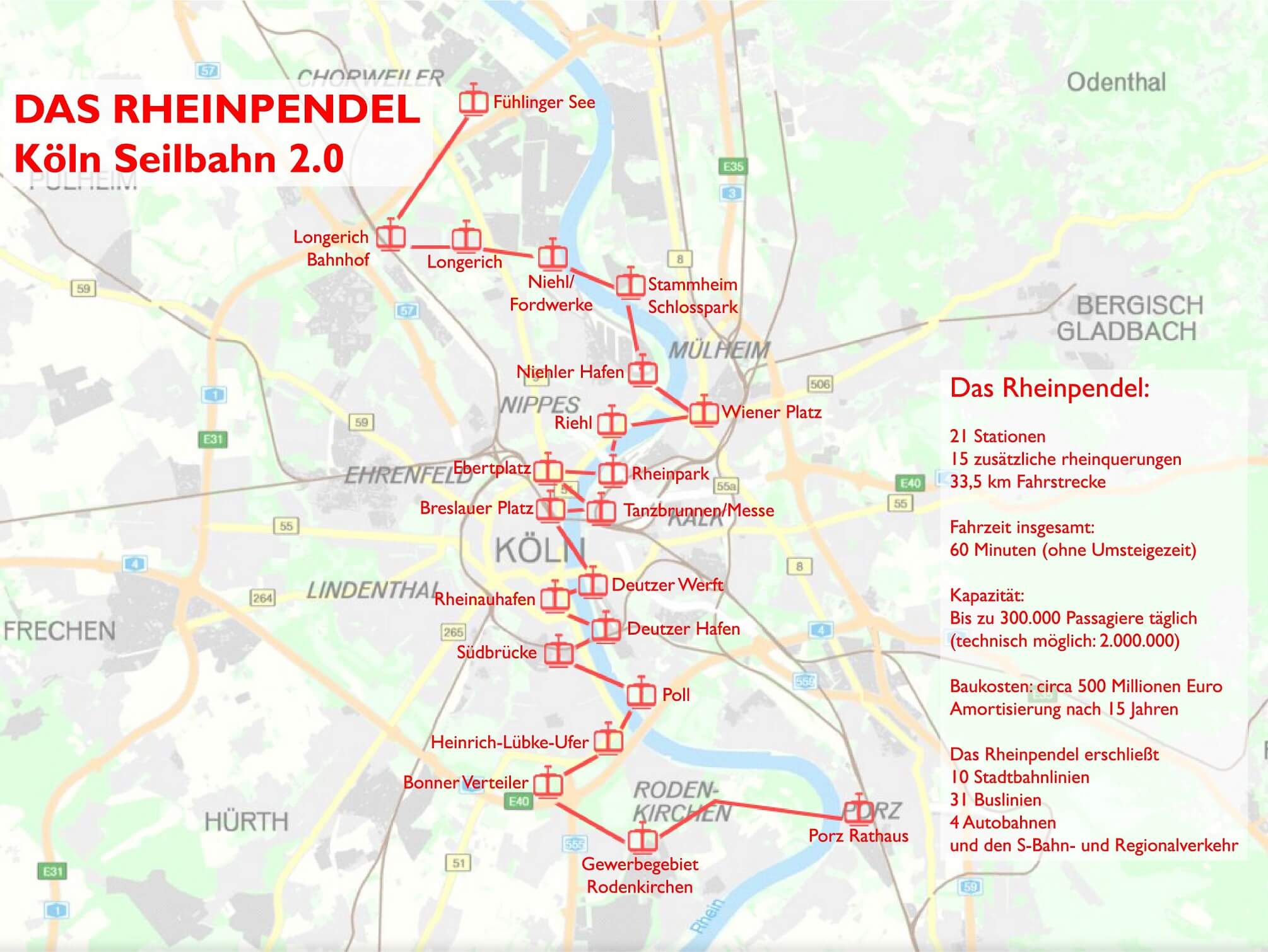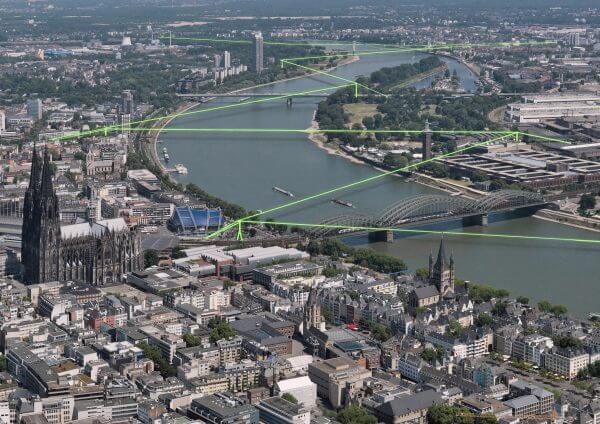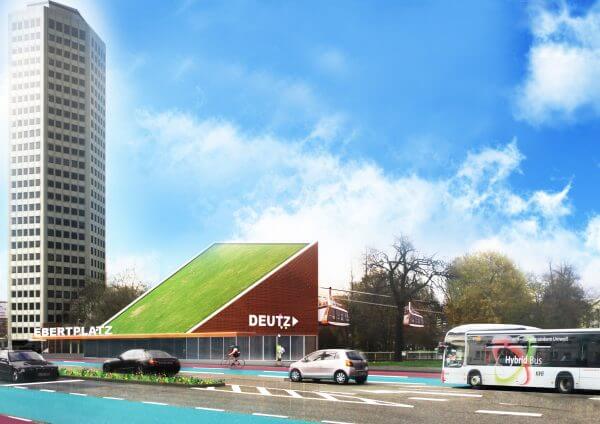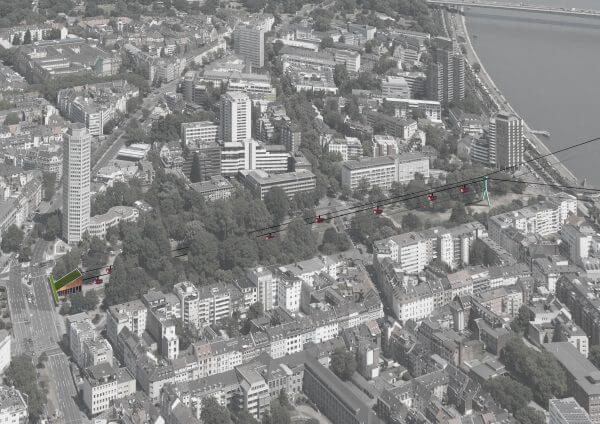
Cities, SI World 2/2019
Cable car network vision: Rheinpendel – the dream for Cologne
The subject of an “urban cable car” is not new in Cologne. In addition to the historic cable car at the zoo and plans for the cable car between Deutz / the exhibition centre and the main railway station (see pages 22-23), there have also been corresponding ideas in the south of the city.
Nevertheless, most of the considerations are and have been selective and limited to one route connection between A and B. “However, the latest technology allows for the cable car system to be designed as a complete network with several stations,” Thomas Schmeckpeper from voter group “GUT Köln” is convinced.
From a certain size, this network could work only in different sectors, i.e. with several hauling cables – with the advantage that different sectors are possible with different circulation speeds and varying service frequencies.
“If you rule out passing across housing developments (the biggest criticism of similar plans in Munich, Wuppertal and Bonn), the remaining route options are the Rhine, the riverbank area and the adjacent green corridors.
These are right at the clogged bottlenecks where the local public transport is ailing,” Schmeckpeper elaborates. These bottlenecks will increase even further in the future, as the districts there, the exhibition centre and the ports are facing massive development – with more and more residents, workers and tourists.

One possible cable car route through the city centre.
A cable car from north to south
That is why “GUT Köln” is planning a cable car system that will connect the north and south of the city, creating several additional Rhine crossings. “The motorway intersections in the north and south will therefore be accessible with new park-andride options,” the project planner says.
The stations are designed as mobility hubs and micro-depots – with linked car-sharing, bus and rail options as well as bicycle parking facilities. The proposed route creates 24 intersection points with the existing city railway and 43 intersection points with the existing bus network.
The gondola capacity allows carriage of bicycles, pushchairs, walking frames and luggage. Bicycle carriage in particular allows completely new route connections for commuters from the city and surrounding area.
33.5 kilometres, 21 stations
The planned cable car system is 33.5 kilometres long and has 21 stations. Theoretically, “Rheinpendel” will be able to transport over two million passengers per day at a service frequency of approx. 30 seconds, assuming that each gondola is completely vacated and repopulated at every station.
The latter is only theoretical, although one twentieth of this would still be 100,000 passengers per day. ”But we are expecting 300,000 passengers per day,” Schmeckpeper says. This would replace tens of thousands of car and bus journeys.
Efficient cable cars would run here at a speed of up to 35 km/h. The route from Bonner Verteiler to the exhibition centre / Deutz could be covered in around 20 minutes – with no traffic jams, traffic lights or waiting times.
Stations can be designed as mobility hubs.

In the black in 15 years
Voter group “GUT Köln” is expecting an investment sum of 500 million euros, which would pay for itself in 15 years. “Compared with all other modes of transport, the cost-benefit ratio is unbeatable – especially as alternative Rhine crossings via tunnels or bridges are extremely expensive,” Schmeckpeper emphasises.
One kilometre of cable car system, incl. station infrastructure, is generally estimated at only six to eight million euros, whereas one kilometre of underground railway is around 250 million euros. In addition, there is the space gained as well as the tourism value of the cable car network, the project planner says.
First draft of a subsection of the urban cable car system. Aspects of the conservation area
and listed building protection still require consideration. Illustrations: Mehdi Yassery

World heritage site proviso
Nonetheless, even cable car fans see one point of concern: interference of “Rheinpendel” in urban development. There are touch points with the cathedral as a world heritage site and with other listed areas.
“However, examples from other cities show that stations, columns and gondolas can be designed to be modern and with high architectural appeal,” Schmeckpeper rebuffs this objection. ts







